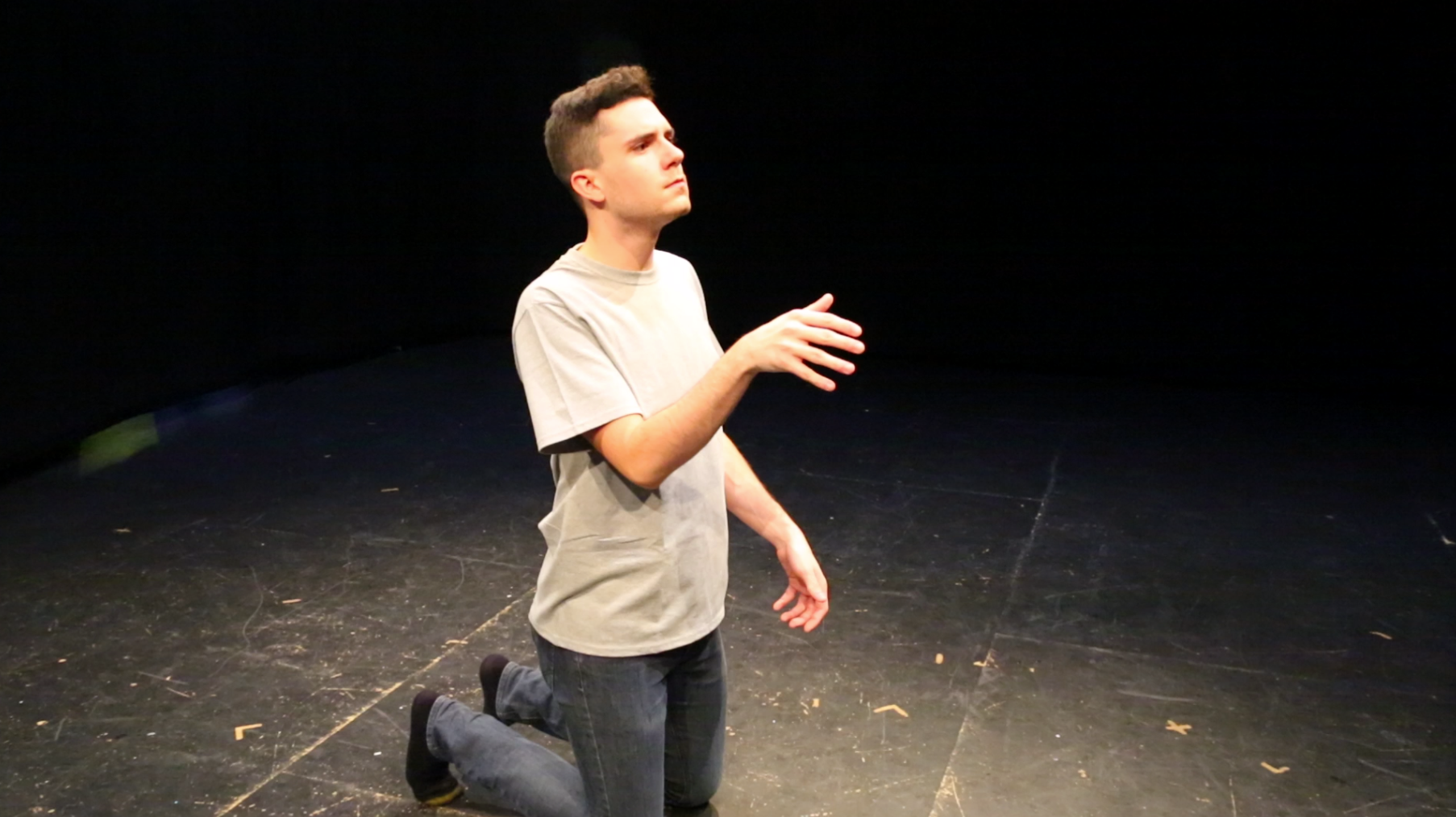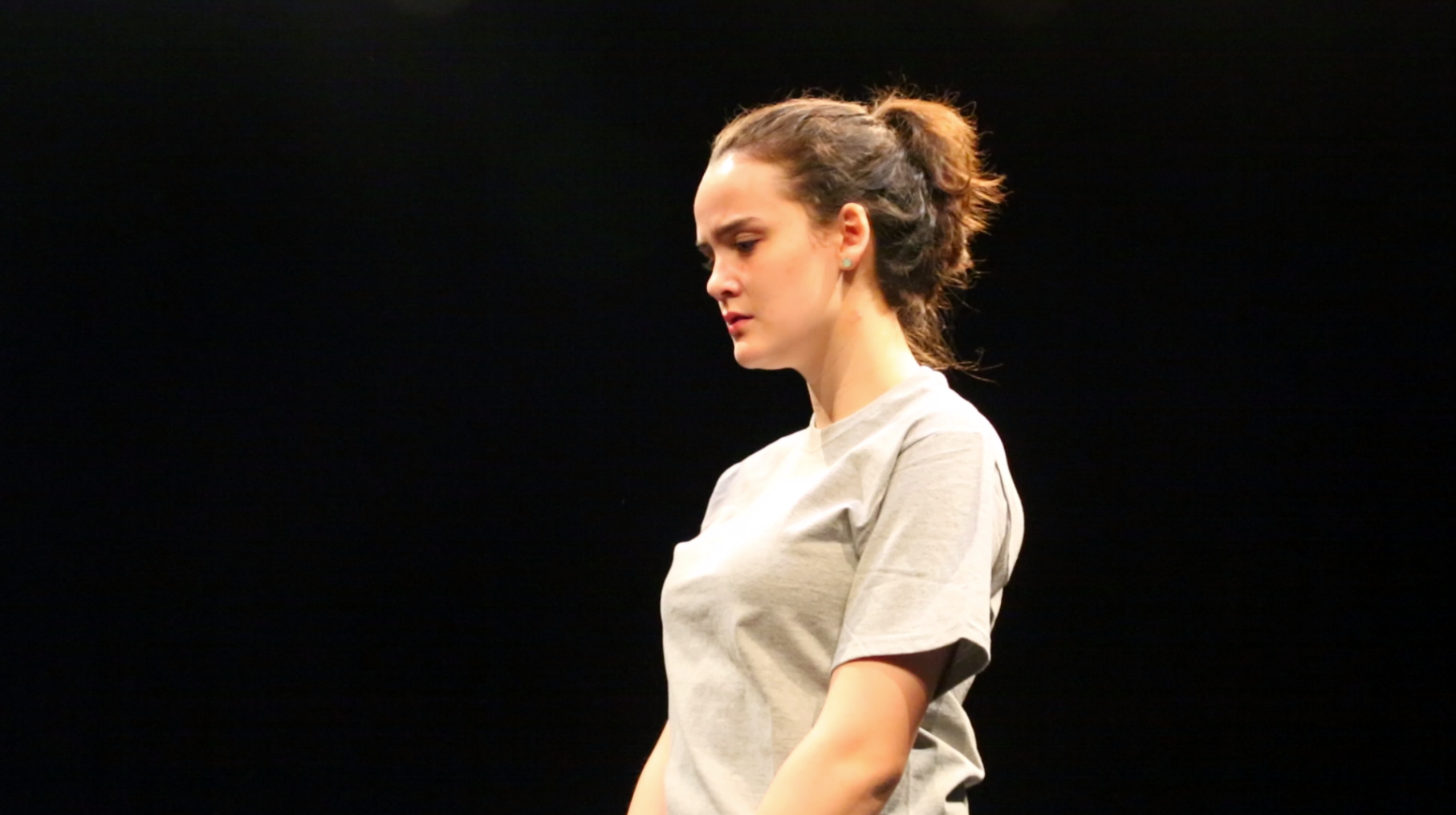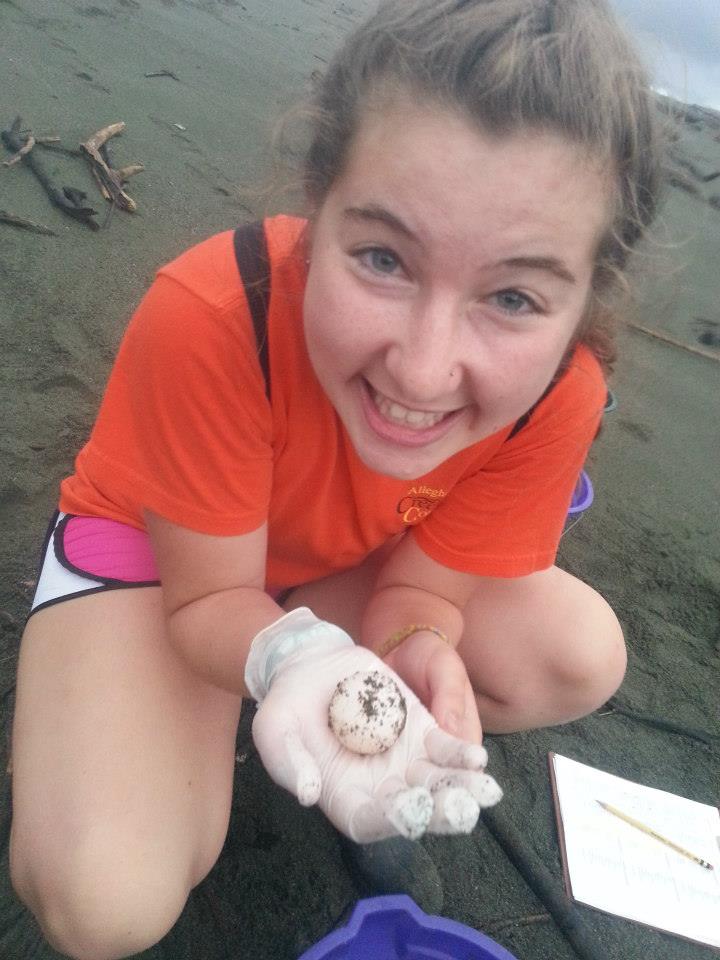Students Connect Science and Humanities through Interdisciplinary Research
Chris Schuchert ’16 stood in a semi-dark room, arms outstretched, while Laura Holesh ’16 snapped his photo.
Leanne Siwicki ’15 repeated the same pose, with Holesh capturing her image as well.
Although the two theater majors looked as if they were practicing for an upcoming performance, they actually were serving as subjects for a psychological study. Holesh and Annie Utterback ’16 are conducting this independent study with Associate Professor of Psychology Aimee Knupsky and Associate Professor of English M. Soledad Caballero.
According to Utterback, a psychology major and women’s, gender, and sexuality studies minor from Sewickley, Pa., the project came out of an interdisciplinary class she took last semester called “Cognitive Humanities – Expressions of Emotion: When Psychology and Literature Converge” with Professors Knupsky and Caballero. The course was created through the support of a New Directions Grant from the Great Lakes Colleges Association.
“The class was about the study of emotion during the 19th century to present day and the reciprocal relationship between science and the humanities,” Utterback says. “It was about how the study of emotion was shaped by literature and theater and medical records. That provided a basis for our project, where Laura and I are studying facial recognition and emotion.”
To conduct this research, Utterback and Holesh selected 20 poses from a manual on gesture and emotion written in 1806 by Henry Siddons, an English actor and theatrical manager now remembered as a writer on gesture. Each page in the book shows an actor making a gesture, with each page labeled with an emotion like “devotion,” “happiness,” anger,” “despair,” or “enthusiasm.”
Utterback and Holesh then asked theater majors Schuchert and Siwicki to recreate the gestures from Siddons’ book while they took photos of each pose.
The student researchers then will project the photos onto a screen and ask study participants to choose which emotion the actors are expressing. Utterback and Holesh will use equipment in the College’s eye-tracking lab to study where participants are looking on the photos in order to make their guesses.
“The eye-tracker will produce what is similar to a ‘heat map,’ allowing us to see where people are looking in the image and for how long,” says Holesh, a neuroscience and psychology double major and biology minor from Gibsonia, Pa. “This will help us to capture their thought process to figure out what emotion it is.”
“We’ll then be able to see if they’re guessing the emotion that the book said it was and how that’s been congruent over time. We’ll also be able to see what part of the gesture is cuing them to the emotion,” Utterback adds. “It will be interesting to see how emotion has developed over several centuries.”
One of the unique components of this study is that it allows the students to conduct interdisciplinary research, meaning the study involves both science (psychology) and humanities (English and theater).
“The wave of the future is really interdisciplinary research, and Allegheny is leading the way by offering research with interdisciplinary courses,” Professor Knupsky says. “It’s about getting students to realize that humanities and natural sciences really are asking the same questions.”
“I’m very interested in the sciences, but I’m also interested in English and theater. So I really like the interdisciplinary focus,” Utterback says. “I like connecting all these subjects. It requires critical thinking and being creative to tie all these things together. It’s been an eye-opening experience.”
Even though the project is not yet complete, Holesh says she already has learned a lot.
“This project definitely has helped me to read scientific literature, analyze it, and see the process of thinking. The creative process also has helped me with my junior seminar,” she says.
“The study has helped me to realize that psychology and science are a lot different than what I thought they were in high school,” Utterback adds.” Science is a study and a way of thinking more than content. You can scientifically study anything.”
The pair also likes the ability to do hands-on research as an undergraduate student.
“I don’t believe other undergrads are doing research like we are and shaping it in the way we are. Laura and I are involved in shaping what the project is and what we’re researching,” Utterback says.
“One of the main reasons I came to Allegheny was to do research, because I knew the opportunities were incredible. Coming in freshman year, I started doing research. At other schools, I don’t think that’s the experience students get,” Holesh adds.
In addition, they appreciate the close relationships they have developed with professors at Allegheny.
“I truly value my relationships with my professors,” Holesh says. “I adore talking to them about their research. They are more than willing to have you come into the lab and see things and be hands-on.”
Holesh and Utterback plan to continue their research next semester and may use this work as a springboard for their comprehensive projects.
Source: Academics, Publications & Research

















